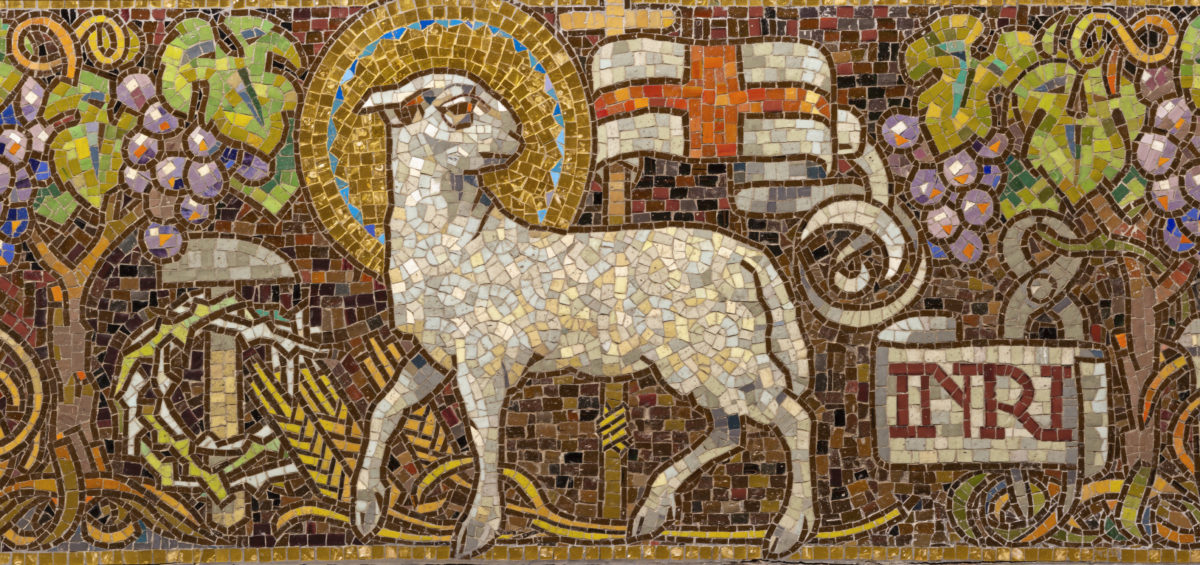For the last two-thousand years, one of the central tenants of the Christian faith has been the assertion that Jesus Christ died on a cross for sin. What Christians have not always agreed on are the details of how this works out spiritually, practically and theologically. In particular, they have argued and debated over details about what Jesus experienced internally and externally during his crucifixion and how his death has atoned sin.
Throughout church history, Christian poets, theologians, philosophers and ministers have developed various formulas and interpretations for understanding the meaning of Jesus’ death. In academic settings, these formulas and interpretations about the meaning of Jesus’ death are referred to as atonement theories and the area of study within Christian theology they sit is atonement theology.
What I’d like to do for the remainder of this post is present seven of the most influential atonement theories throughout church history. I will hold my personal response to each theory for now in order to let the theories speak for themselves and allow you the space to ponder what they mean without my commentary. At the close of the article, I will share some resources that will help anyone who would like to do further research into these historic Christian atonement theories.
1. Ransom theory
One view that was popular early in church history was the ransom theory. Outside of Christian theology, ransom refers to a payment made or owed for the release of a prisoner. In the ransom theory, adherents believed that a debt was owed to Satan due to mankind’s sin. It was implied and sometimes stated that because Adam and Eve sinned when they ate of the forbidden fruit, they had sold themselves (albeit unintentionally) to Satan, or the devil, who gave them the fruit. Others holding this view said the debt was not owed to Satan, but rather to death itself, and still others to Sin (the personified power or evil behind human sin). Mark 10:45 and 1 Timothy 2:5-6 are key passages for this view.
One of the earliest church fathers, Origen (c. 185-c. 253 AD/CE) and instrumental theologian of the early Middle Ages, St. Augustine of Hippo (354-450 AD/CE) held this view, though Augustine may have changed his mind later in life opting for the recapitulation theory or perhaps held to both. Also notable, modern theologian, C.S. Lewis, portrayed a version of the ransom theory in his much-loved classic The Lion, the witch and the wardrobe. In the story, the Queen of Narnia, representing the devil, demands the life of Edmund who deceived his siblings. Aslan, knowing the Deep Magic, offers himself as a ransom payment for Edmund, and, unbeknownst to the Queen, rescues Edmund from his failure. Popular Pentecostal theology speaks of Jesus going to hell after his crucifixion to “take back the keys to death, hell and the grave” from Satan.
2. Recapitulation theory
To recapitulate is to sum up, review, or restate. The recapitulation theory suggests that in Jesus’ life and death on the cross, God is retelling humanity’s story and as he retells it, God (through Jesus) is reversing the damage done by Adam and Eve, and humanity with it. In the first telling, Adam and the rest of humanity screwed things up by their faithless disobedience, but in this retelling—or summing up version—of the human drama, Jesus brings the human story to its dramatic and hopeful conclusion through his faithful obedience to God. Where Adam missed the mark; Jesus has hit the mark and profoundly turned things around. In addition to saying that Jesus is God’s “summary statement,” Irenaeus also suggested Jesus is the “Logos of the Father,” which, according to Peter Leithart, is “a rhetorical conception of redemption history as the speech of the Father.” Key Scripture passages for this view are Ephesians 1:10 and Romans 5:12-21.
The one credited for creating this theory was an early church father named Irenaeus (125-202 AD/CE). Other early church fathers and Christian theologians who held to this view were Athanasius the Confessor (c.296-373 AD/CE), Gregory of Nazianzus (c. 379-390), St. Augustine of Hippo (354-450 AD/CE) and Maximus the Confessor (c.580-662). Modern theologian D. E. H. Whitely, in his book The Theology of St. Paul, has advocated for another version of this theory.
3. Satisfaction theory
In an attempt to offer a critique to the traditional ransom theory and improve upon it, church theologian, Anselm of Canterbury (1033-1109 AD/CE) created the satisfaction theory of atonement in his book Curs Deus Homo (Why the God man?). Anselm’s biggest critique against the commonly held ransom view was that he saw problems with any suggestion that mankind owed some of kind of debt to Satan. For Anselm, rather than a debt owed to Satan, he believed we owed something God. The debt we owed, he believed, was honor to God.
Understanding his historical context may prove helpful. Anselm lived in the time of Medieval European feudalism, where honor to one’s earthly master or lord was part of the very fabric of the economic hierarchy of classes. From this vantage point, Anselm’s atonement theory emerged.
Humanity owed God honor. When human beings dishonored God, they sinned against God. Their sin robbed or took away from the honor due to God. Due to God’s holiness, God can’t ignore human sin. But since only God could truly satisfy his own honor, only God could fix the problem and restore that honor to himself. However, for God’s action to apply to human beings, God had to become human. The death of Jesus (the God-man) on a cross, then, restored honor back to God that had been once robbed by human sin. Not only this, but Jesus’ death brought God the Father infinite satisfaction, over and above what anyone could ever do. Jesus then offered this overflow or “abundance” of satisfaction to human beings (called supererogation) so that they too might satisfy God’s honor. In this sense, the satisfaction view carried a substitutionary component because Jesus’ actions were on our behalf. While sharing a substitutionary component with the penal-substitution view, Anselm’s view is substantially different as we will see.
4. Penal-Substitution Theory
Four-hundred years later after Anselm’s theory was developed, the Protestant Reformers, like Martin Luther and John Calvin, developed the idea of substitutionary atonement further into what has been called the penal-substitution theory of atonement. Both saw in the atonement the requirement of blood shed of a perfect man. Conversely to the satisfaction view, God’s honor was not the critical issue in the penal-substitution theory; the primary concern was God’s justice and holiness being upheld. Because of humanity’s sin, both the wrath of God (due to the breaking of God’s law) and the righteousness of God (due to our moral impurity that resulted from breaking God’s law) had to be satisfied.
And the only thing that could satisfy God’s wrath and righteousness, in this view, was the death of the perfect, holy God-man Jesus Christ. This is where the legal aspect comes into play. In contrast to the satisfaction view, Jesus’ death was not “repaying God for lost honor but paying the penalty of death.” This penalty of death, the Protestant Reformers believed, included his actual physical death (satisfying the justice of God) but further meant “the bearing of man’s sins” on the cross. Both of which “set the believer free from the penal demands of the law.”
Reformers, like John Calvin, developed the notion of “imputed righteousness” out of the penal-substitution view—where, in the body of Jesus, Jesus literally took upon himself all of mankind’s sins, and in exchange transferred (or imputed) us with his righteousness. Once a sinner repents of their sins, God transfers (or imputes) the righteousness of Jesus Christ to them. Righteousness, as unrighteousness, in this view, is often seen as an active force or power within a person rather than, as in other later theories, the faithful actions (faithfulness) or unfaithful actions (unfaithfulness) of people.
Some version of the penal-substitution theory is widely held by Christians across Christian traditions and denominations in many western countries.
5. Moral Example Theory
In the moral example (or moral influence) theory, the goal of Jesus’ death was to “influence mankind toward “moral improvement.” Instead of satisfying God’s justice or honor, Jesus’ death “was designed to greatly impress mankind with a sense of God’s love, resulting in softening their hearts and leading them to repentance.”
A Medieval French scholastic philosopher poet and theologian, Peter Abelard (c. 1079-1142), developed this theory of atonement. Abelard, a contemporary of Anselm of Canterbury, developed this view as a response to Anselm’s satisfaction theory. In contrast to Anselm who believed the critical issue at hand with the atonement was God’s honor (or rather that humanity had dishonored God by our sin and that Jesus’s death obtained perpetual honor back to God), Abelard focused instead on God’s love—in particular, that God had demonstrated his love for humanity through the death of Jesus to influence us toward a better way of living. Key Scriptures for this theory are Mark 10:42-45, Romans 12:1-21, Ephesians 5:1-2, and 1 John 3:16.
6. Christus Victor Theory
In the Christus Victor (Christ the Victor) theory of atonement, Jesus’ death was a confrontation with and victory over three big powers: the power of sin, the power of death and the power of the devil. It was not, as with the traditional understanding of the ransom theory—a payment to the devil—but rather a confrontation with and victory over the devil. And because Jesus was raised from the dead, the benefits of Jesus’ victory and accomplishment over the powers resulted in every human having access to freedom from the power of the devil, sin and death.
The theory was developed by Swedish theologian, Gustaf Aulen (1879-1977) in his 1931 book Den kristna försoningstanken (The Christian Idea of Atonement). Aulen argued that post patristic era, later Christian theologians mistook the early church fathers’ ransom view of as a payment to the devil (resembling an economic transactional payment of a debt owed), when in truth the early church fathers believed Jesus’ death—as a ransom—had the purpose of rescuing and liberating humankind from the power of the devil which led us to be slaves of sin. Since we were slaves to the powers, Jesus overcame the devil’s power through his death and resurrection (his resurrection gained us access), and the effect was our own freedom from enslavement to the devil and sin, and consequently death.
If Aulen is correct, early church fathers like Irenaeus, Origen of Alexandria and even St. Augustine of Hippo held to this view of the ransom theory, renamed Christus Victor by Aulen. The theory has become increasingly welcomed by Christians of various Christian traditions.
7. Christian Universalist Theory
I placed this theory last for the following two reasons. First, many Christians I know personally don’t take this view seriously. In fact, they would not have included it in this list. Second, had I included it earlier in this article, several Christian readers would have checked out.
Let me be clear that the Christian universalist theory of atonement should be distinguished completely from Unitarian Universalism, or humanist universalism, and other more general universalist views. While there are similarities, there are clear differences. The irony of course about the push-back toward this theory is that the Christian universalist view of atonement is one of the earliest views in the history of Christianity. One of the earliest church fathers of the Patristic Period, Origin of Alexandria (c.185-253), held to this view, and he was a highly respected Christian and Christian theologian among many churches and individuals. He would later die for wounds he got from the Decian persecution led by Roman emperor Decian. Origen’s teacher, Clement of Alexandria (c.150-215), another early patristic church father, also held this view.
The Christian universalist theory of the atonement of Christ has one central component and it’s as follows: Jesus’ death on a Roman cross was effective to rescue and atone for all of humanity (no exceptions) from the power of sin and to reconcile people to God. “Salvation,” in this view, “is not from hell, but from sin.” Christian universalism is sometimes used interchangeably with universal reconciliation, although it might be understood as the theory’s central component. While there are differences among Christian universalists over whether hell and eternal punishment exists, they generally agree that Jesus’ death on a cross reconciled the entire world to God. While some present-day Christians might claim that this view downplays or lowers the bar (even makes a mockery) of the atonement of Jesus Christ, Christian universalists argue that this view plays up (or magnifies), even raises the bar for, how we should understand what Jesus’ death has accomplished for everyone.
Key Scripture passages for this theory include: Luke 3:5-6, Luke 19:10, John 3:17, John 12:32, Acts 3:19-20, Romans 5:15-18, Romans 11:32, Romans 11:36, Romans 14:11, Philippians 2:6-11, 1 Corinthians 3:12-15, 1 Corinthians 15:22-28, 2 Corinthians 5:14-19, 1 Timothy 2:1-4, Ephesians 1:7-10, Ephesians 4:9-10, Colossians 1:19-20, Colossians 3:11, 1 Peter 4:16, 1 John 2:2, Revelation 21:22-25. Some modern Christian thinkers and theologians who either hold to this view and/or are sympathetic to it are Keith Giles, Brad Jersak, Brian McLaren, Rob Bell, and Nicholas (Nik) Ansell. Notable books on the subject are Jesus Undefeated: Condemning the false doctrine of eternal torment, The last word and the word after that (the 3rd book in A new kind of Christian trilogy), The Annihilation of hell: Universal salvation and the redemption of time in the eschatology of Jurgen Moltmann, and That all shall be saved: heaven, hell and universal salvation.
CLOSING THOUGHTS
Perhaps, as you were reading through these seven atonement theories (especially if this was the first time doing so), you found yourself considering perspectives and views about the meaning of Jesus’ death that you hadn’t considered before. And that’s a good thing. Maybe you grew up with the ransom theory being taught in church, and you found the Christus Victor theory very compelling. Or perhaps you grew up with the penal-substitution theory and found the moral example theory compelling. Or maybe you found yourself agreeing with more than one theory, or multiple theories, at the same time. All those responses are valid.
My intention in this post, as I already mentioned, was not to say which theories, or groups of theories I believe to be the most trustworthy, true or correct. It was to help you expand your learning (especially if you hadn’t learned about them before). It was also to share historical content that has shaped my own theological and spiritual process in hopes that, perhaps, it might have an opportunity to shape yours.
Click here for the next essay in the atonement series.
RESOURCES
Online resources: Each of these seven theories is highlighted blue in this article and will take you to an article at www.theopedia.com or www.wikipedia.com when clicked on.
Book resources: You can purchase them on Amazon or perhaps borrow at your local library.
- A Community Called Atonement by Scott McKnight
- Five Views on the Extent of the Atonement by Gundry, Louth, Levering, Horton, Sanders, & Greggs
- The Day the Revolution Began: Reconsidering the Meaning of Jesus’s Crucifixion by N.T. Wright
- Sinners in the Hands of a Loving God: The Scandalous Truth of the Very Good News by Brian Zahnd
- The Secret Message of Jesus: Uncovering the Truth that could change everything by Brian McLaren
- Jesus Undefeated: Condemning the false doctrine of eternal torment by Keith Giles
Here’s the Atonement Series Title Line-Up from start to finish
- My evolving understanding of Jesus’ death
- FaithRethink Series on the Atonement Returns
- 7 atonement theories from church history (page you’re on now)
- Hijacking the Biblical Story of the Atonement
- Reengaging with the Bible’s Biggest Themes
- 7 Bible Stories you think you know but don’t
- Cruciform atonement theory: How Jesus’ death on a Roman cross changes everything
- Questions and answers about the atonement







